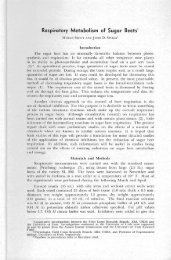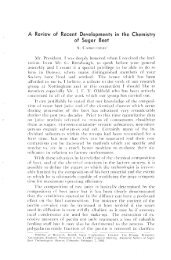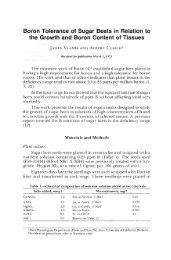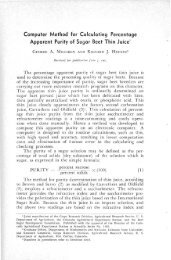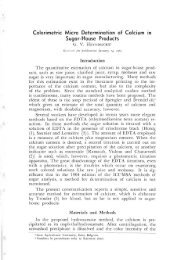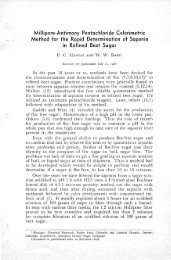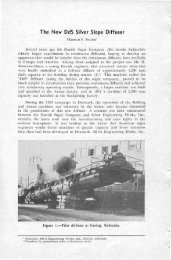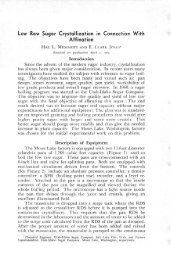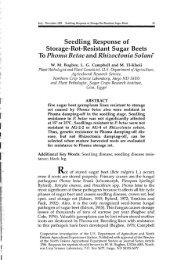Journal of Sugar Beet Research - Vol
Journal of Sugar Beet Research - Vol
Journal of Sugar Beet Research - Vol
Create successful ePaper yourself
Turn your PDF publications into a flip-book with our unique Google optimized e-Paper software.
10 <strong>Journal</strong> <strong>of</strong> <strong>Sugar</strong> <strong>Beet</strong> <strong>Research</strong> <strong>Vol</strong>. 45 Nos. 1 & 2<br />
the infected area. In plots that were severely affected, many <strong>of</strong> the roots<br />
had a proliferation <strong>of</strong> the lateral roots. During both seasons, the disease<br />
was more prevalent at the Hillsboro site than it was at the Perley location<br />
based on pre-plant soil indexing and on the average disease severity <strong>of</strong><br />
harvested roots.<br />
Yield and Quality Analysis<br />
Yield components were seen to vary at the Perley and Hillsboro<br />
experimental locations in both 2001 and 2002. With the high disease<br />
pressure present at both locations, little significant improvement was<br />
observed in yield with respect to the test treatments, including treatments<br />
with hymexazol. An exception in 2001 was the treatment with<br />
harpin <strong>of</strong> plants derived from raw seed resulting in increased yields at<br />
the Hillsboro location as compared to the untreated check (Figure 2).<br />
Additionally, data from 2002 at the Perley research site showed a significant<br />
increase in yield and recoverable sugar (Mg ha -1 ) where a combined<br />
treatment <strong>of</strong> BCA or harpin treatment with MT+H treatments were<br />
compared to treatments with MT (Figure 3). Thus, MT+H treatment <strong>of</strong><br />
seed induced yields in 2002 <strong>of</strong> 2.82 Mg ha -1 which was not significantly<br />
different than treatment with MT alone; addition <strong>of</strong> either B. cepacia<br />
on seed or harpin on the foliage, however, onto MT+H pre-treated seed<br />
induced yields that were significantly higher than those provided by MT<br />
treatment alone (LSD 0.05 <strong>of</strong> 0.94 Mg ha -1 <strong>of</strong> recoverable sucrose).<br />
DISCuSSIon<br />
Aphanomyces root rot <strong>of</strong> sugarbeet has been a perennial problem in<br />
production in the Central U.S. and Japan and an increasing problem in<br />
Europe. The disease impacts both seedlings and adult roots in the field<br />
(Papvizas and Ayers, 1974) and pre-disposes harvested beets to storage<br />
rot and sucrose loss through increased respiration (Campbell and Klotz,<br />
2006). The control <strong>of</strong> Aphanomyces root rot has relied on a single<br />
applied chemical, hymexazol, that protects germinating seedlings under<br />
heavy disease pressure and can maintain an effect through to young<br />
plants in fields with moderate disease pressure (Windels, 1990; Windels<br />
and Brantner, 2001). From early growth stages through maturation,<br />
sugarbeet is dependant upon heritable resistance for protection against<br />
root rot disease (Coe and Schneider, 1966).<br />
Results from the present study indicate that the use <strong>of</strong> the tested<br />
BCAs as a solitary preventative agent, or induced resistance as a therapeutic,<br />
have poor efficacy in northern Red River Valley, USA fields in<br />
reducing chronic root rot caused by A. cochlioides. Although B. cepacia



